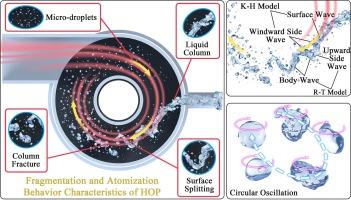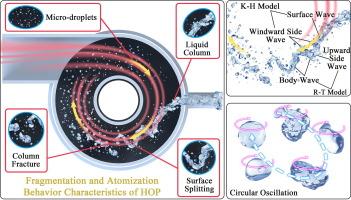High-speed imaging and experimental study on carbon fiber porch exhaust gas treatment using hydro-jet oscillation purification technology
IF 9
1区 工程技术
Q1 ENGINEERING, CHEMICAL
引用次数: 0
Abstract
In the carbon fiber manufacturing process, the oxidation furnace porch link encounters complexities in the treatment of hydrogen cyanide (HCN) in the presence of significant tar and other contaminants. The Hydro-jet Oscillation Purification (HOP) technology, an innovative mass transfer enhancement strategy, enhances process efficiency through the exploitation of multi-scale phenomena, including jet atomization and droplet oscillation. Designed for environments prone to dust, HOP mitigates the risk of equipment blockage. This study utilizes high-speed imaging, absorption experiments, and industrial support techniques to elucidate the interplay between the crushing mode and the Gas-phase Weber number (WeG), establish a link between the column fracture point and the liquid–gas momentum ratio, and develop an empirical equation for the mass transfer of HCN in a 5 % NaOH solution. The successful deployment of HOP in the Shanghai Petrochemical Large Wire Bundle Project has demonstrated its efficacy, maintaining HCN outlet concentrations in exhaust gases below 1.9 mg·m−3, thereby indicating its considerable potential for broader applications.


水射流振荡净化技术处理碳纤维玄关废气的高速成像与实验研究
在碳纤维制造过程中,氧化炉门廊环节在处理氰化氢(HCN)时遇到了复杂的问题,因为存在大量焦油和其他污染物。水力射流振荡净化(HOP)技术是一种创新的传质强化策略,通过利用射流雾化和液滴振荡等多尺度现象来提高工艺效率。专为容易产生灰尘的环境而设计,HOP降低了设备堵塞的风险。本研究利用高速成像、吸收实验和工业支持技术,阐明了破碎模式与气相韦伯数(WeG)之间的相互作用,建立了柱断裂点与液气动量比之间的联系,并建立了HCN在5 % NaOH溶液中的传质经验方程。HOP在上海石化大线束项目中的成功部署证明了其有效性,将废气中HCN出口浓度保持在1.9 mg·m−3以下,从而表明其具有广泛应用的巨大潜力。
本文章由计算机程序翻译,如有差异,请以英文原文为准。
求助全文
约1分钟内获得全文
求助全文
来源期刊

Separation and Purification Technology
工程技术-工程:化工
CiteScore
14.00
自引率
12.80%
发文量
2347
审稿时长
43 days
期刊介绍:
Separation and Purification Technology is a premier journal committed to sharing innovative methods for separation and purification in chemical and environmental engineering, encompassing both homogeneous solutions and heterogeneous mixtures. Our scope includes the separation and/or purification of liquids, vapors, and gases, as well as carbon capture and separation techniques. However, it's important to note that methods solely intended for analytical purposes are not within the scope of the journal. Additionally, disciplines such as soil science, polymer science, and metallurgy fall outside the purview of Separation and Purification Technology. Join us in advancing the field of separation and purification methods for sustainable solutions in chemical and environmental engineering.
 求助内容:
求助内容: 应助结果提醒方式:
应助结果提醒方式:


